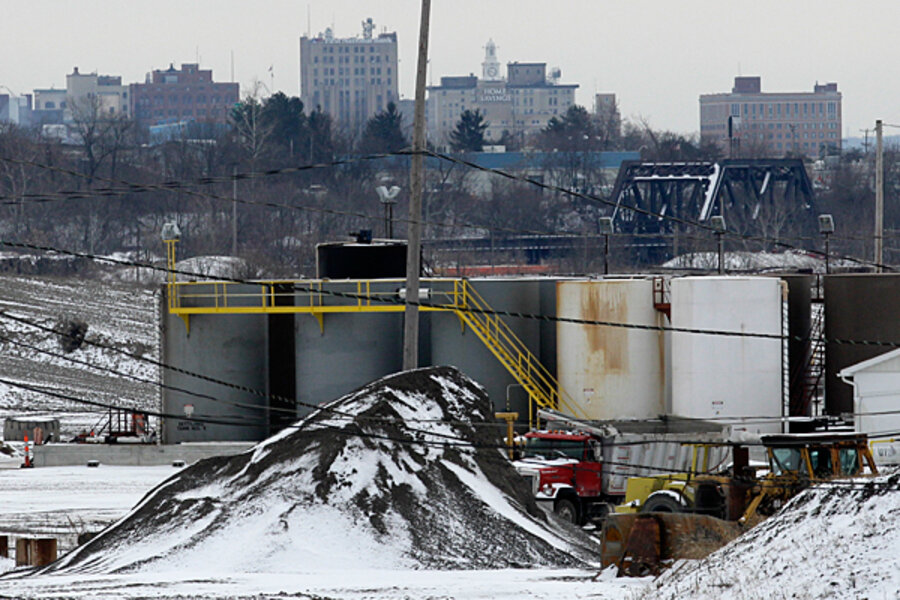Report cites fracking-related activities as potential suspect in minor quakes
Federal research scientists are linking the deep underground injection of waste water from oil and gas exploration to a major increase in minor earthquakes from Colorado to Ohio.
A modest increase in such quakes was noticed beginning in 2001 in coal-bed methane fields near the Colorado-New Mexico border. That number accelerated rapidly from 2009 through 2011 and was especially pronounced in the oil and gas fields of northern Arkansas and central and southern Oklahoma, the scientists found.
Across that region, 50 earthquakes were larger than magnitude 3 in 2009. The number rose to 87 quakes in 2010 and reached 134 earthquakes in 2011 – more than six times the annual average levels recorded from 1970 to 2000.
The large jump is "a remarkable increase" in the rate of minor earthquakes that is "almost certainly manmade," according to the abstract of a new study by US Geological Survey scientists, which is expected to be delivered at a scientific conference next week in San Diego. The full study was unavailable.
In Oklahoma, for instance, the rate of earthquakes larger than magnitude 3 (considered a minor quake) abruptly increased around 2009 – rising from 1.2 per year over the past half century to more than 25 per year, the study found.
"A naturally-occurring rate change of this magnitude is unprecedented outside of volcanic settings or in the absence of a main shock, of which there were neither in this region," the study abstract notes.
Even though the higher frequency indicates that quakes are probably being induced by human activity, "it remains to be determined how they are related to either changes in extraction methodologies or the rate of oil and gas production," the abstract says.
In an interview with the online news service Energy Wire, lead study author William Ellsworth, a USGS scientist, called the increase that his team documented "very peculiar."
The soaring number of quakes overlaps with a huge jump in the amount of drilling for natural gas occurring in shale beds – an approach called "fracking," which produces millions of gallons of waste water. While some fracking waste water is treated aboveground, much of it is injected into deep waste-water wells.
Is that activity inducing man-made earthquakes by lubricating the faces of underground earthquake faults, so that they slip and slide more easily and frequently?
Not according to a senior Department of Interior official, who was quick to note that no link between quakes and fracking has been established – even if the waste water from the process, when injected, might be behind the quake mystery.
The USGS findings "do not suggest that hydraulic fracturing, commonly known as ‘fracking,’ causes the increased rate of earthquakes," David Hayes, deputy secretary of Interior, wrote on his blog Wednesday.
While it appears likely that the increased rate of earthquakes is man-made, it's unclear if that is related to changes in production methods or the rate of oil and gas production, he wrote.
"USGS’s scientists have found, however, that at some locations the increase in seismicity coincides with the injection of wastewater in deep disposal wells," he continued. Even so, "[w]e also find that there is no evidence to suggest that hydraulic fracturing itself is the cause of the increased rate of earthquakes."





